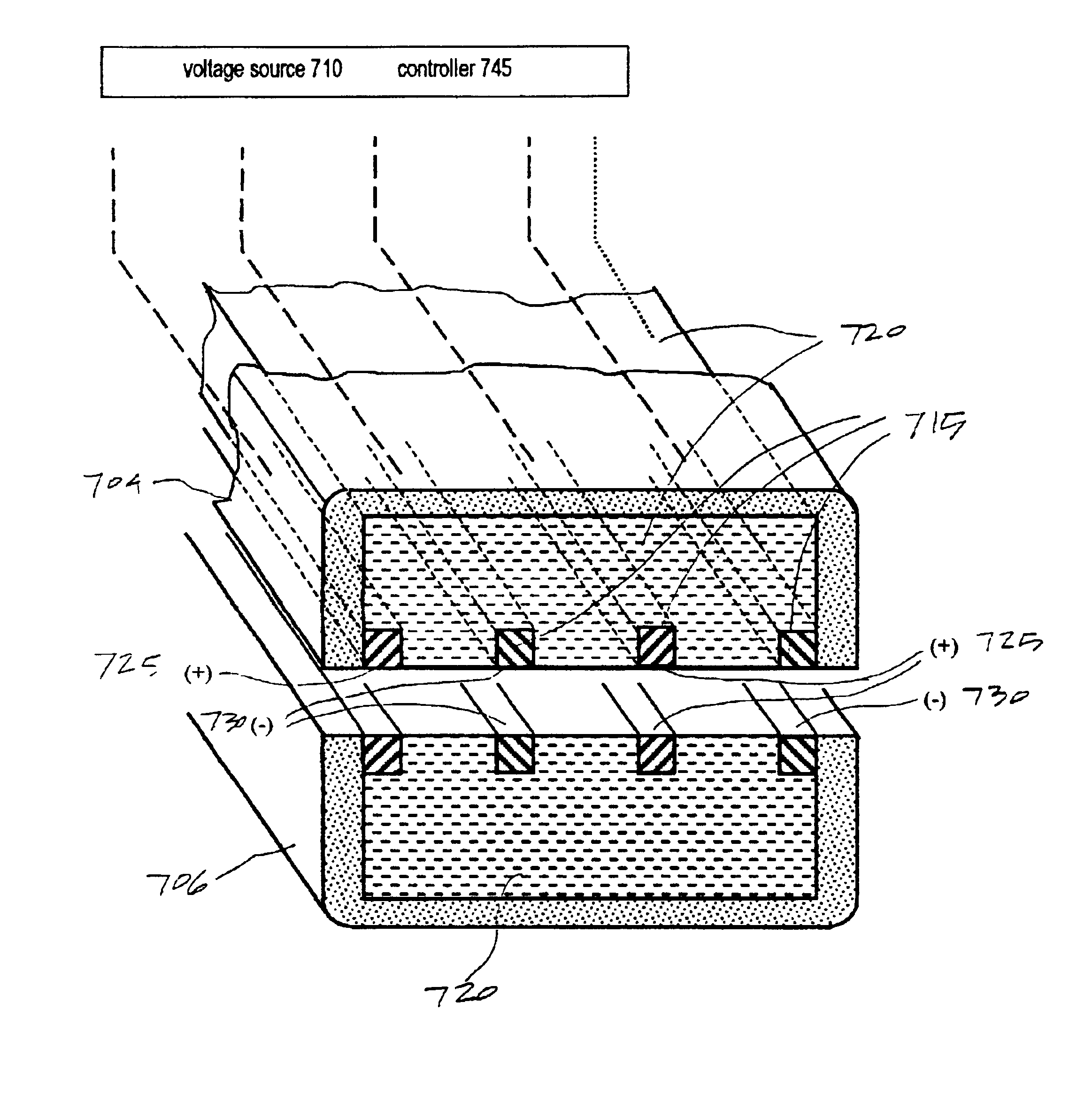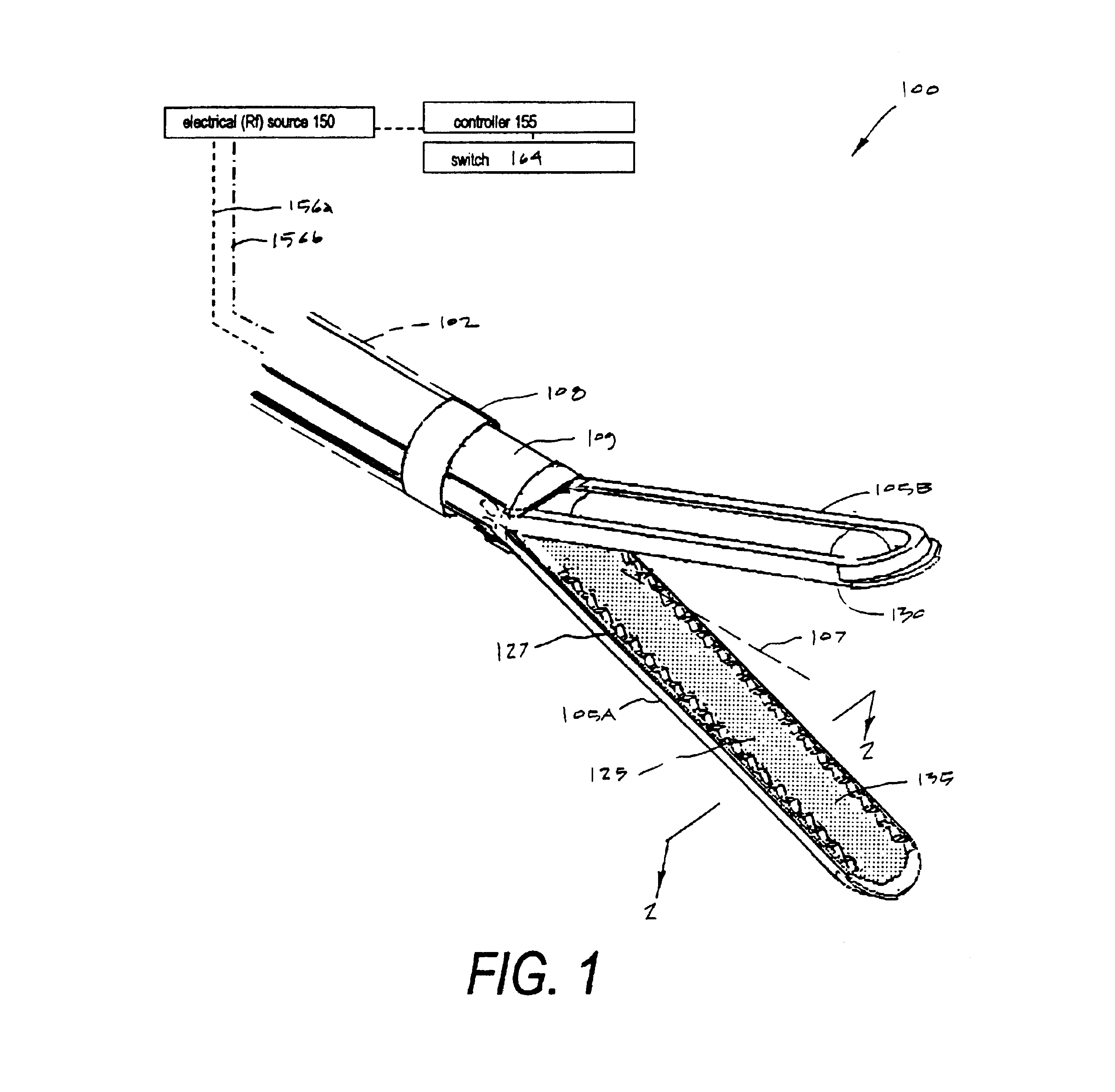Electrosurgical instrument
a working end and electrode technology, applied in the field of electrosurgical instruments, can solve the problems of ineffective bipolar instruments in sealing or welding many types of tissues, non-uniform sealing of tissues, and rf jaws that engage the opposing sides of tissue volume, so as to reduce rf energy application, prevent any substantial dehydration of tissues, and effectively apply energy to tissues
- Summary
- Abstract
- Description
- Claims
- Application Information
AI Technical Summary
Benefits of technology
Problems solved by technology
Method used
Image
Examples
Embodiment Construction
[0039]1. Type “A” working end for tissue sealing. An exemplary Type “A” working end 100 of a surgical grasping instrument is illustrated in FIGS. 1-2 that is adapted for energy delivery for sealing or welding tissue. The working end 100 is carried at the distal end of an introducer portion 102 that can be rigid or flexible in any suitable diameter. For example, the introducer portion 102 can have a diameter ranging from about 3 mm. to 5 mm. (or larger) for use in endoscopic surgical procedures. The introducer portion extends along axis 107 from its proximal end that is connected to a handle (not shown). The working end has first (lower) jaw 105A and second (upper) jaw 105B that are coupled to the distal end 108 of the introducer portion 102. The jaws may both be moveable or a single jaw may move to provide an open position and a closed position wherein the jaws approximate toward axis 107. The opening-closing mechanism can be any type known in the art. For example, a reciprocatable ...
PUM
 Login to View More
Login to View More Abstract
Description
Claims
Application Information
 Login to View More
Login to View More - R&D
- Intellectual Property
- Life Sciences
- Materials
- Tech Scout
- Unparalleled Data Quality
- Higher Quality Content
- 60% Fewer Hallucinations
Browse by: Latest US Patents, China's latest patents, Technical Efficacy Thesaurus, Application Domain, Technology Topic, Popular Technical Reports.
© 2025 PatSnap. All rights reserved.Legal|Privacy policy|Modern Slavery Act Transparency Statement|Sitemap|About US| Contact US: help@patsnap.com



